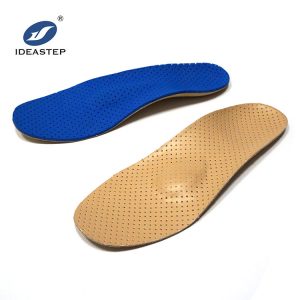
When it comes to non-slip insoles, several materials offer good traction and grip. The best material for non-slip insoles depends on personal preferences and the specific requirements of your footwear. Here are some commonly used materials known for their non-slip properties:
1. Rubber
Rubber is a popular choice for non-slip insoles due to its high coefficient of friction. It provides excellent grip on various surfaces, making it suitable for activities that involve a lot of movement or require stability.
2. Silicone
Silicone-based insoles also offer good slip resistance due to their sticky nature and ability to adhere well within shoes, preventing slippage while walking or running.
3. Textured fabrics
Some insoles feature textured fabrics with raised patterns or grooves that provide added grip against the shoe’s interior surface, enhancing stability and reducing slipping.
4. TPU (Thermoplastic polyurethane)
TPU is a flexible yet durable material that offers good slip resistance when used as an outer layer or incorporated into the design of the insole.
5. Cork
While not inherently non-slip, cork has natural moisture-wicking properties that can help prevent sweat buildup inside shoes, maintaining dryness and reducing slipping risks indirectly.
Ultimately, selecting the best material for non-slip insoles involves considering factors such as comfort, durability, compatibility with your footwear type, and effectiveness on different surfaces based on individual needs and preferences.
Related product links: https://www.aideastep.com/product/cushion-insole-non-slip-arch-support/.
